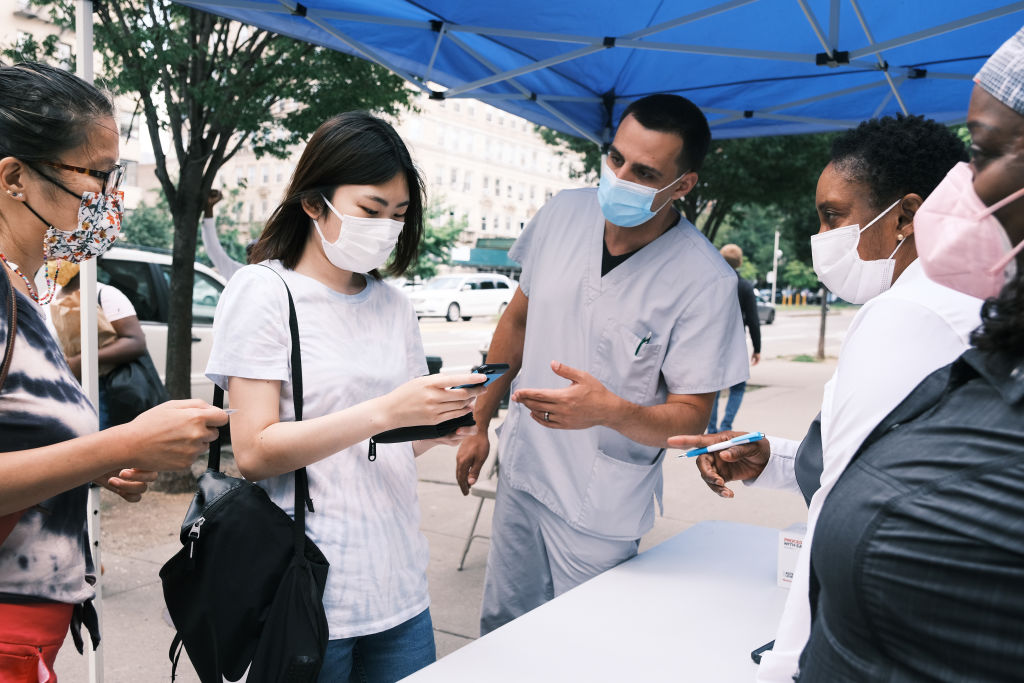As the COVID-19 pandemic enters its third year, the emergence of highly transmissible variants and the increase in cases, hospitalizations, and deaths among the unvaccinated reinforce the urgency to expand vaccination efforts. Developing requirements and booster incentive programs to increase vaccination rates requires federal, state, and local elected officials, public health authorities and their partners to build trust and develop targeted programs.

The Societal Experts Action Network (SEAN) of the National Academies of Sciences, Engineering, and Medicine (NASEM) has released guidance on strategies for developing requirement and booster incentive programs to increase vaccine uptake.
Consider the following when developing requirement programs:
- Public health and ethical considerations. Before implementing requirements, consideration needs to be given to certain public health and ethical criteria. This includes ensuring that the safety of vaccines has been communicated, other mitigation strategies have been exhausted, barriers to access have been addressed, and voluntary uptake amongst groups subject to the requirements has not reached sufficient levels. Ethically, the least intrusive but effective method for increasing vaccination has been shown to be optimal. Ideally, a vaccination requirement would be implemented only after other strategies for increasing vaccination uptake have been exhausted.
- Balance the requirements. A more forceful policy does not necessarily result in a higher rate of vaccination because the limitations on personal choice might lead to strong resistance. Requirement programs need to balance excessive leniency, which allows people to exempt themselves easily, and excessive strictness, which does not allow any exemptions at all.
- Target the requirements appropriately. Compared with requirements applied to the general population, targeted requirements focused on subpopulations are more likely to succeed as they have a limited scope and are easier to implement and enforce. Examples of such targeted requirements include school and employer mandates.
While incentive programs have not proven consistently to be effective in the United States as a means of promoting uptake of first doses of the COVID-19 vaccines, they may have potential for impact if used for booster doses. Incentives for boosters may have greater potential for impact relative to those for first doses, given that the population in need of boosting has already demonstrated a willingness to be vaccinated and is therefore likely to be more open to receiving another dose.
Key considerations for developing incentives for vaccine booster programs:
- Well-known and advertised. The target population needs to be aware of the availability of the incentive.
- Delivered immediately. Incentives that are provided right after vaccination are more likely to be effective and more valued.
- Has value. The more valuable the incentive is to the recipient, the more impact it will have. The amount of the incentive also matters depending on the value assigned by the target population.
- Cost-effective. A cost-effectiveness analysis can be performed to determine whether incentives are more cost-effective than other program strategies.
- Meets ethical and health equity criteria. The incentive needs to help advance health equity and not unfairly disadvantage any vulnerable group.
- Risk assessment. Incentive programs carry some risks, including the possibility that people will start to expect payment for future vaccines or people may think they are being compensated for a potential risk associated with the vaccine. Also, incentives that are posed as rewards for vaccination can be economically inefficient, if they end up being used to reward those who would have gotten vaccinated anyway.
Requirement programs can be an effective strategy for increasing rates of vaccination, but their success depends on designing them in ways that are targeted, effective, and build trust. While evidence that incentives can improve first-dose vaccine uptake is limited, incentives may be able to move the needle on booster uptake, especially for people already inclined toward vaccination and early on in the rollout of new boosters.
The full rapid expert consultation is available here.
Dig Deeper
Learn more key strategies on developing requirement and booster incentive programs through this interactive web summary.

About the Authors:
Malvern Chiweshe is a Program Officer supporting the Societal Experts Action Network at the National Academies of Sciences, Engineering, and Medicine. SEAN is sponsored by the National Science Foundation and the Alfred P. Sloan Foundation.

Chelsea Fowler is an Associate Program Officer supporting the Societal Experts Action Network at the National Academies of Sciences, Engineering, and Medicine. SEAN is sponsored by the National Science Foundation and the Alfred P. Sloan Foundation.

Emily Backes is a Senior Program Officer at the Societal Experts Action Network and Deputy Board Director, Board on Children, Youth, and Families & Committee on Law and Justice at the National Academies of Sciences, Engineering, and Medicine. SEAN is sponsored by the National Science Foundation and the Alfred P. Sloan Foundation.








